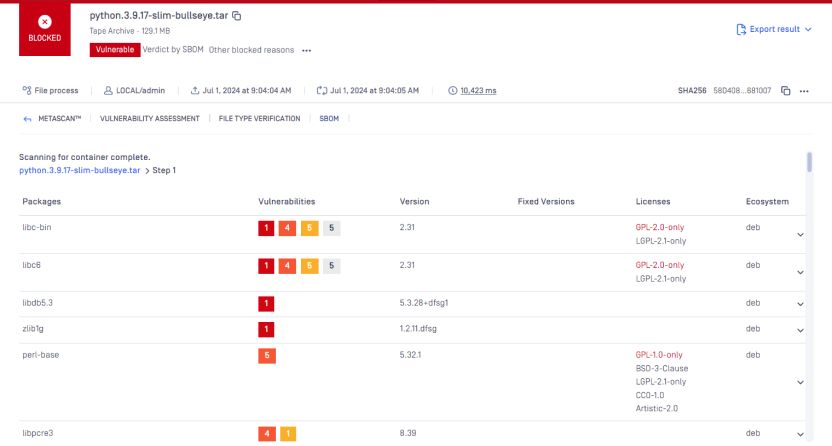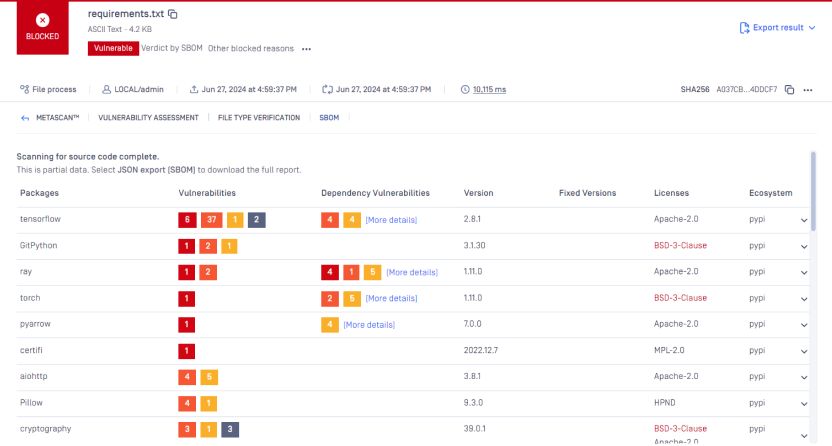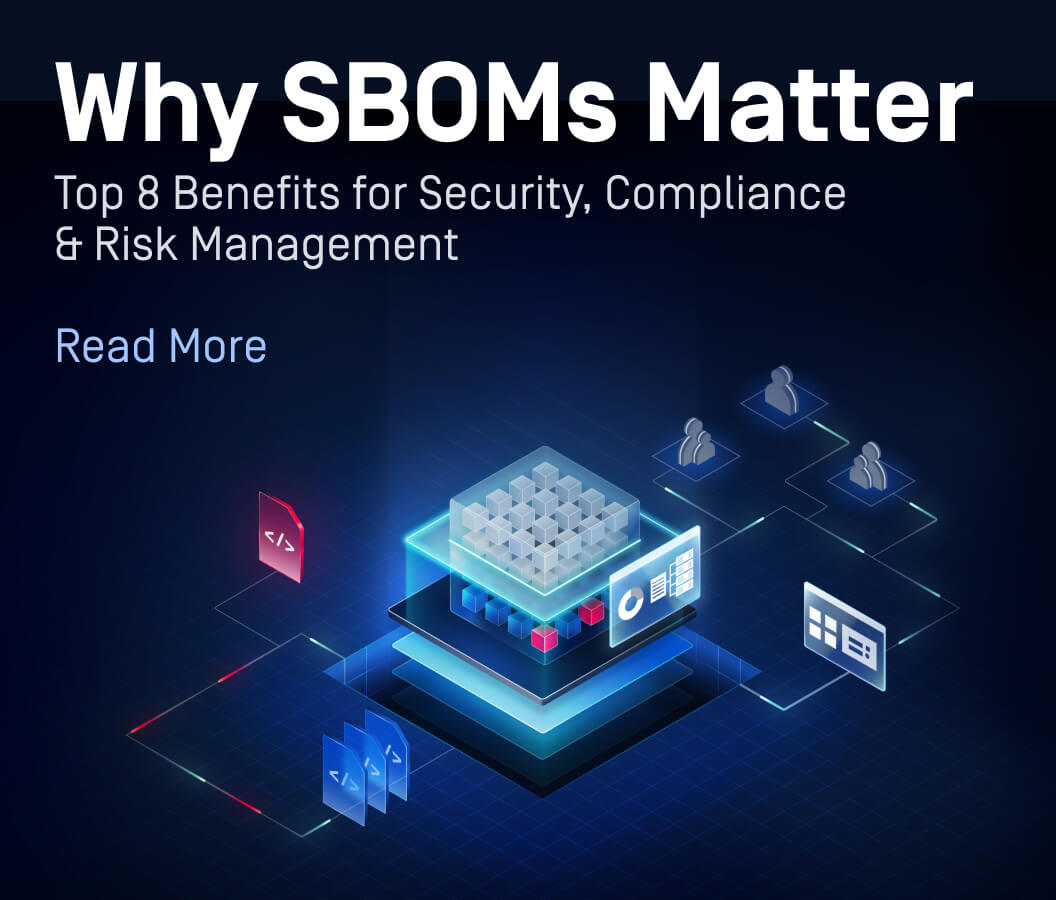Open-source software (OSS) has revolutionized application development. By leveraging pre-built, well-tested OSS libraries and frameworks, developers can accelerate lifecycles and enrich functionality. This collaborative spirit fosters innovation, but it also introduces a layer of risk.
Each external dependency integrated into your codebase is essentially a piece of someone else's work. While many OSS projects prioritize security, vulnerabilities can still emerge. Furthermore, managing versioning and understanding the specific code used becomes increasingly challenging with more third-party code. This is where Software Bills of Materials (SBOMs) come into play, with license detection at their core.
OPSWAT SBOM acts as a comprehensive inventory, detailing all software components, including package names, versions, and dependencies. Think of it as a detailed bill of materials for your project, providing a central reference point. However, without license detection, a key element is missing.
Understanding License Detection
License detection analyzes the licenses associated with each open-source component within your SBOM. This is crucial because a single codebase can contain numerous open-source components with varying licenses. Accurate license detection is therefore essential to avoid legal pitfalls and maintain a healthy software supply chain.
OPSWAT SBOM features a powerful license detection function that meticulously analyzes each open-source component within your SBOM. By moving beyond just the license type (e.g., GPL, MIT), this feature provides a more granular view of your open-source dependencies, including the specific version and any relevant clauses that might affect your project's licensing obligations.
Key Features of OPSWAT SBOM’s License Detection
Licenses can have clauses that force you to open-source your code. It's critical to make sure you're using licenses that don't threaten the value of your company. By doing license scanning you'll be prepared for SBOM requests during audits.
Automated License Detection
Our SBOM leverages advanced algorithms to scan third-party library components and accurately identify the licenses governing each included component. With a comprehensive, intuitive dashboard, OPSWAT SBOM easily shows which components violate copyleft policies to accompany your company's compliance requirements.
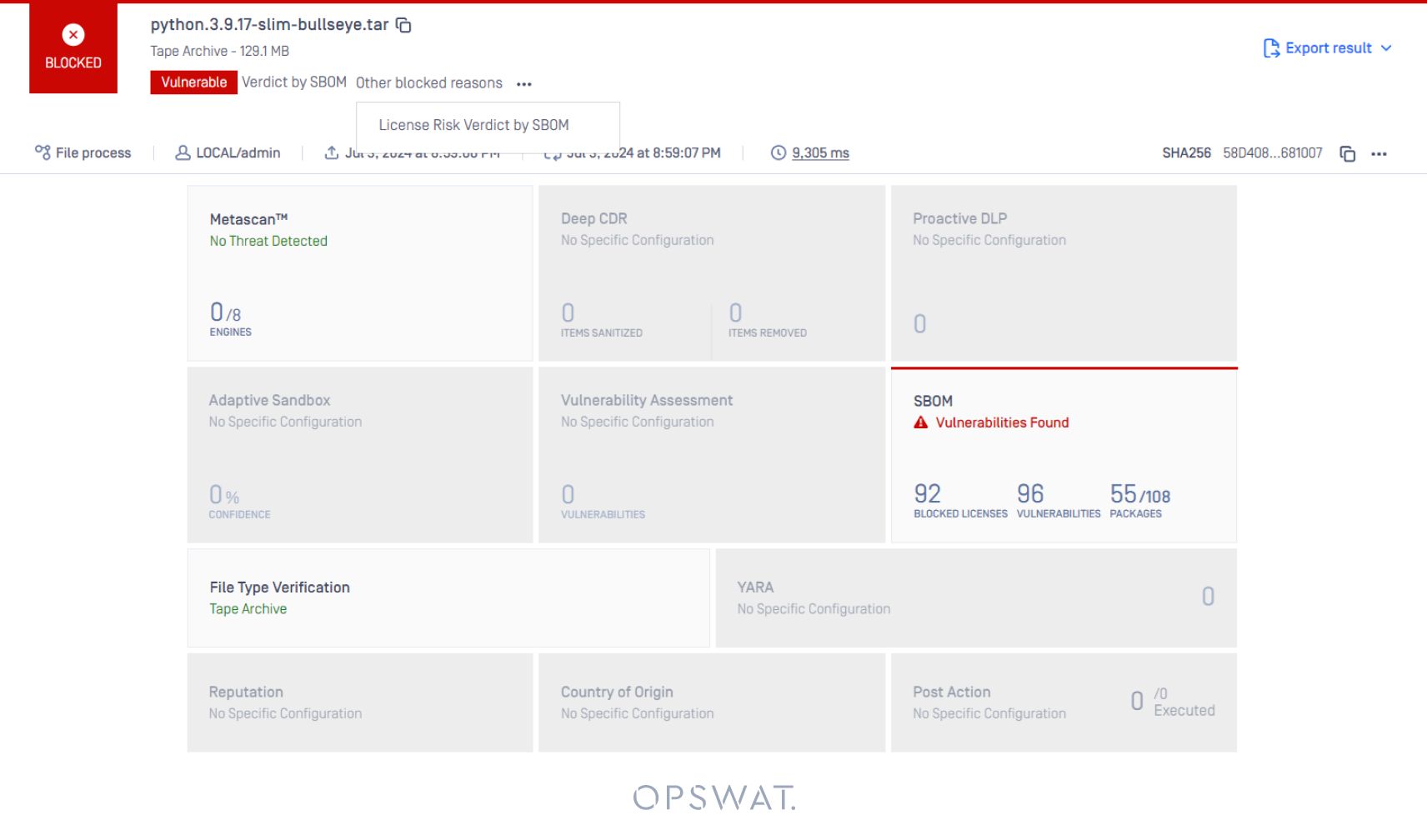
Unapproved License Block
Beyond just detection, our SBOM module can block the use of unapproved licenses in your projects. Define a list of approved licenses, and the module will prevent the inclusion of any libraries that do not comply with your specified licensing policies.

Sample Blocked Licenses
License Detection in OSS Security Management
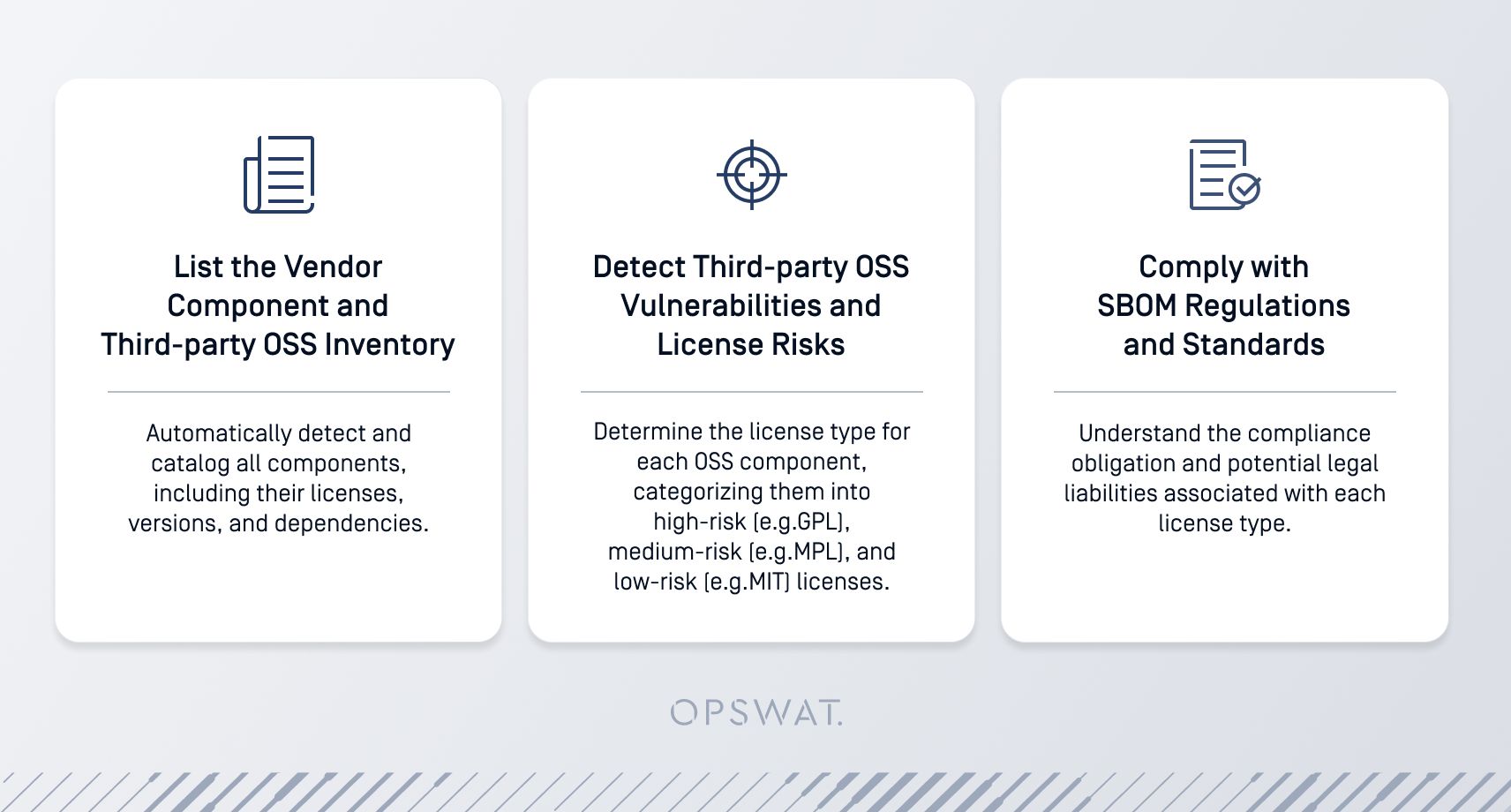
The Consequences of Unwanted Licenses
Using open-source packages with restrictive or "copyleft" licenses like the GNU GPL can expose your organization to legal liabilities if you don't comply with the license terms. For example, GPL requires you to open-source your entire application if you use GPL-licensed components.
With license detection, OPSWAT SBOM identifies the licenses associated with open-source components used in your project. By implementing comprehensive license detection within our SBOM, organizations can significantly mitigate risks associated with:
- Potential copyright infringement
- Legal liabilities
- Compliance issues
Incorporate License Detection into Your DevSecOps Strategy

License detection is not merely a matter of legal compliance – it is a fundamental aspect of securing your software supply chain. To achieve comprehensive security, teams should also focus on addressing threats such as malware and vulnerabilities. By adopting a holistic DevSecOps approach and incorporating license detection as part of the DevSecOps strategy, organizations can significantly enhance the integrity of their applications and ensure a robust defense against supply chain attacks.
To manage these threats, MetaDefender Software Supply Chain offers comprehensive solutions, including automated license detection. With MetaDefender, development teams gain comprehensive visibility into potential risks within their supply chain. The platform offers powerful capabilities to identify and mitigate threats – including malware, vulnerabilities, and hardcoded secrets (such as credentials, passwords, APIs, tokens, and keys).
By scanning software packages, container images, and their dependencies, you can proactively uncover and address potential threats before they impact your applications and affect your stakeholders, customers, and partners. This multi-layered approach ensures that teams maintain a secure and compliant software ecosystem.
Closing Thoughts
License detection is an essential component of SBOM for managing open-source security. OPSWAT SBOM empowers you to gain control by providing automated scanning, clear visualizations of license information, and the ability to enforce approved licenses. This comprehensive approach ensures compliance, reduces risk, and strengthens your software supply chain.
Stay tuned for further advancements as we continue to develop and refine OPSWAT SBOM. We're dedicated to offering the most comprehensive and user-friendly SBOM experience available.
